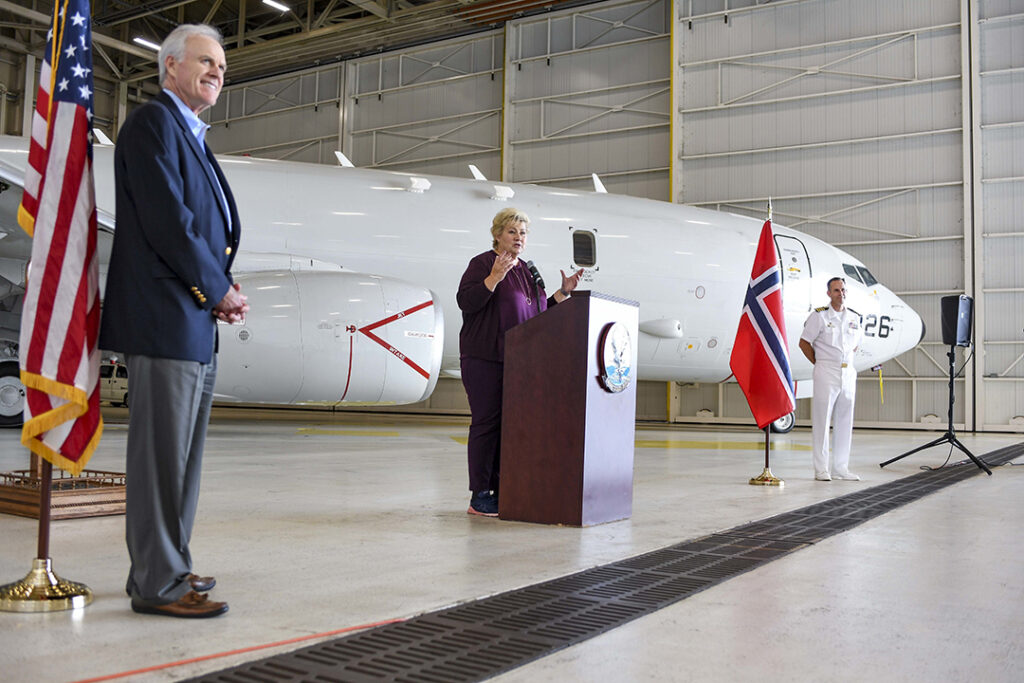THE WATCH STAFF
Norway’s recent announcement that it plans to deploy P-8A Poseidon surveillance aircraft to the Arctic in 2022 is the latest step in the country’s effort to strengthen its defense capabilities in a region of strategic competition.
Norway signed a Supplementary Defense Cooperation Agreement (SDCA) with the United States, a NATO ally, on April 16, 2021. The deal allows the U.S. to build facilities at three Norwegian airfields and one naval base but will not amount to separate bases. The Ministry of Defence has already approved Evenes Air Station in northern Norway as the main base for its future Boeing-made fleet of P-8As, Defense News magazine said in an August 27 report.
Norway, along with the U.S. and Russia, belongs to the eight-member Arctic Council. Both Russia and the People’s Republic of China, which is not a council member, have sought to exert influence in the Arctic. Russia currently holds the two-year rotating chairmanship of the council.
Nearly half of Norway’s landmass is Arctic territory, and it shares a 125-mile land border with Russia, according to the council.
“Our cooperation with our allies is under continuous development. The (SDCA) agreement reaffirms Norway’s close relationship with the U.S. and confirms Norway’s key position on the northern flank of NATO,” Foreign Minister Ine Eriksen Soereide said, according to Reuters.
The Royal Norwegian Air Force ordered five of the multimission maritime P-8As to replace its current Lockheed Martin P-3C/N Orion patrol aircraft. The Orions operate from the Andoya Air Station, located 190 miles inside the Arctic Circle, according to Defense News. Norway signed a contract to buy the P-8As, pictured, in 2017, with delivery expected for 2022 and 2023. The first of the P-8As underwent tests in the U.S. in August 2021, according to the magazine.
Evenes Air Station offers the P-8As shorter flying times to Norway’s maritime security zone in the High North. The aircraft will be equipped with submarine-detection sonobuoy technology, and they can launch torpedoes to eliminate hostile submarines, according to Defense News.
The acquisitions come against the backdrop of increasing submarine activity by Russia’s Northern Fleet in areas west of the Barents Sea, including the Norwegian Sea and the North Atlantic, according to Defense News. The Norwegian military has developed a plan to strengthen its ability to track Russia’s Yasen-class submarines, which are equipped with the latest stealth technology, according to Defense News.
When Prime Minister Erna Solberg presented her long-term plan for Norway’s military in April 2020, the document mentioned Russia 58 times and China 52 times, according to a report in The Barents Observer newspaper published by Radio Canada International. According to the document, Russia poses a bigger security challenge than it has in decades.
“We have a challenging strategic environment that constantly reminds us that we cannot take our freedom and security for granted,” said Norway’s defense minister, Frank Bakke-Jensen, according to the August 27, 2021, report in Defense News.
IMAGE CREDIT: PETTY OFFICER 3RD CLASS ALANA LANGDON/U.S. NAVY

